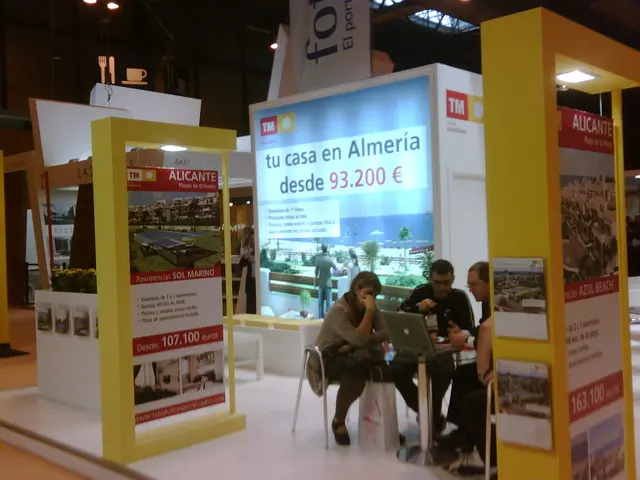Hedonistic sustainability refers to the blending of pleasure and environmental responsibility in architectural design, showcased by BIG's new project in New York City, offering a delightful spin on eco-friendly structures.
Hedonistic Sustainability: Combining Environmental Responsibility with Enjoyment
Hedonistic sustainability is a design philosophy that emphasizes the co-existence of sustainable development and the pursuit of pleasure. Coined by Bjarke Ingels Group (BIG), this approach aims to create environments that are not only environmentally responsible but also desirable and enjoyable for inhabitants.
Implementation in Urban Development
BIG U in Lower Manhattan
The BIG U project in Lower Manhattan, designed by BIG, is a prime example of hedonistic sustainability. The U-shaped network of elevated parks, public lidos, covered walkways, cycle paths, and sports facilities not only protects the Lower East Side of Manhattan from flooding but also enhances the quality of life for residents by providing public spaces and amenities.
Other Projects and Principles
BIG's work extends beyond Lower Manhattan, with projects like Dubai's Jebel Ali Racecourse Project showcasing a living landscape of interconnected communities that blend nature into urban design, prioritizing holistic well-being, sustainability, and social sustainability.
The Solar Punk Movement, inspired by similar ideas, aims to create sustainable futures that are desirable and vibrant, often influencing urban design projects to be more community-driven and innovative.
Key Principles of Hedonistic Sustainability
The principles of hedonistic sustainability are integration of nature, community engagement, innovative design, and holistic well-being. These principles are integral to how the approach is implemented in urban development projects, aiming to create thriving, sustainable, and enjoyable urban environments.
Integration of Nature
Incorporating green spaces and natural elements into urban design enhances livability and sustainability.
Community Engagement
Fostering social interaction and community engagement through public spaces is crucial for hedonistic sustainability.
Innovative Design
Using design to create enjoyable and sustainable environments rather than sacrificing pleasure for sustainability is a key aspect of the approach.
Holistic Well-being
Prioritizing the well-being of both people and the planet is essential for hedonistic sustainability.
The BIG U: A Case Study
The BIG U was designed by BIG in the wake of Hurricane Sandy. The federal government's allocation of $335m for the first phase of the BIG U's construction was contingent on the delivery of access improvements, community-oriented programming, and ecological enhancement within the local area.
Every mile of public amenity in the BIG U is built on foundations that double up as towering, utilitarian flood defences. The parks in the BIG U are flood plains populated with salt-tolerant flora. The canopies covering the walkways in the BIG U can flip down to create instant storm barriers.
The delivery of benefits for multiple stakeholders, such as access improvements, community-oriented programming, and ecological enhancement, is crucial for the success of transformative projects like the BIG U.
The Future of Hedonistic Sustainability
Cities like Bangkok, Venice, Dhaka, and Miami are currently investigating flood and storm defense systems, indicating a growing interest in hedonistic sustainability. Delivering these schemes requires doing things differently, according to Bjarke Ingels, who emphasizes the importance of being profoundly convinced by one's work and taking ideas from seemingly opposite sides to create a new hybrid.
In conclusion, hedonistic sustainability is a design philosophy that combines sustainability with enjoyment, creating environments that are both environmentally responsible and desirable. The BIG U in Lower Manhattan is a prime example of this approach, demonstrating the potential for urban development projects to be both resilient and enjoyable.
- Science plays a crucial role in informing the design decisions in hedonistic sustainability, as the integration of nature and environmental responsibility requires a deep understanding of ecosystems and ecological processes.
- The principles of hedonistic sustainability, including holistic well-being, innovative design, and community engagement, overlap with the field of environmental science, illustrating the synergy between science, technology, and urban development.




